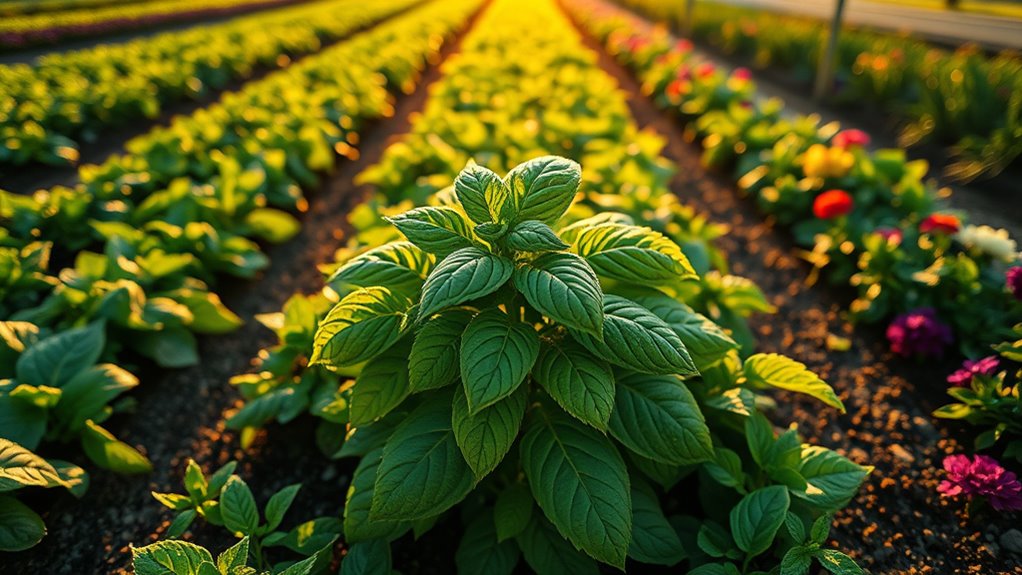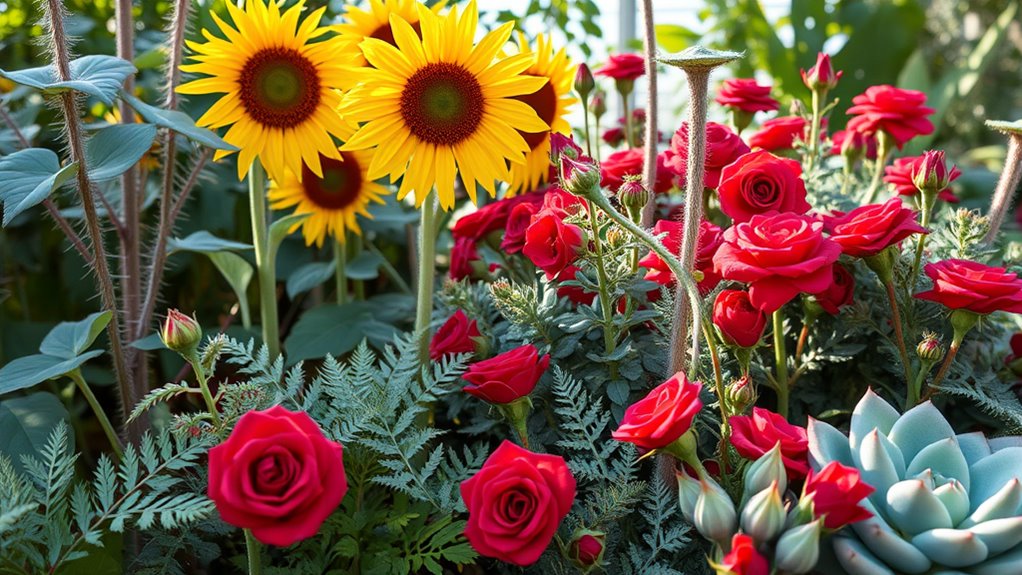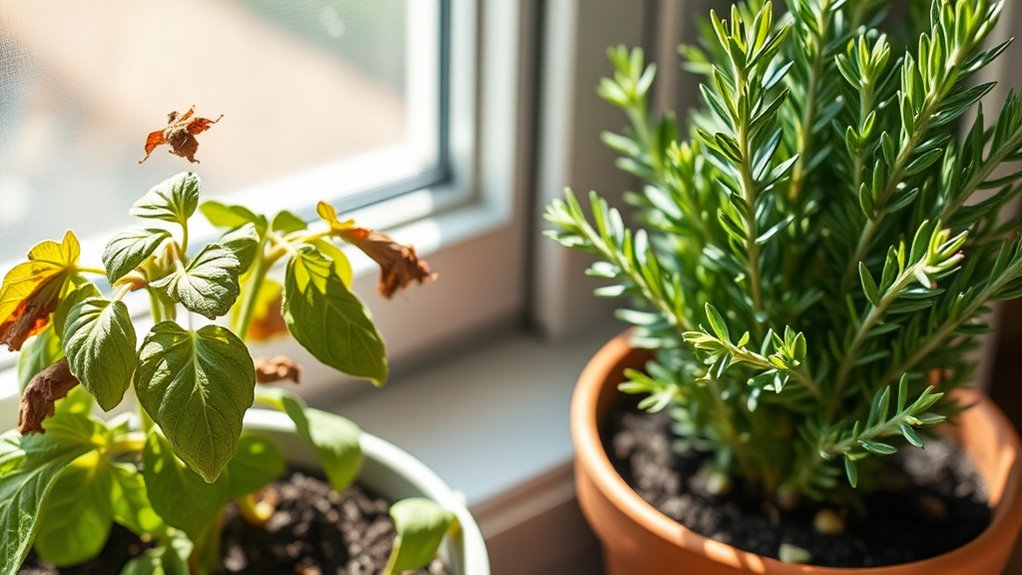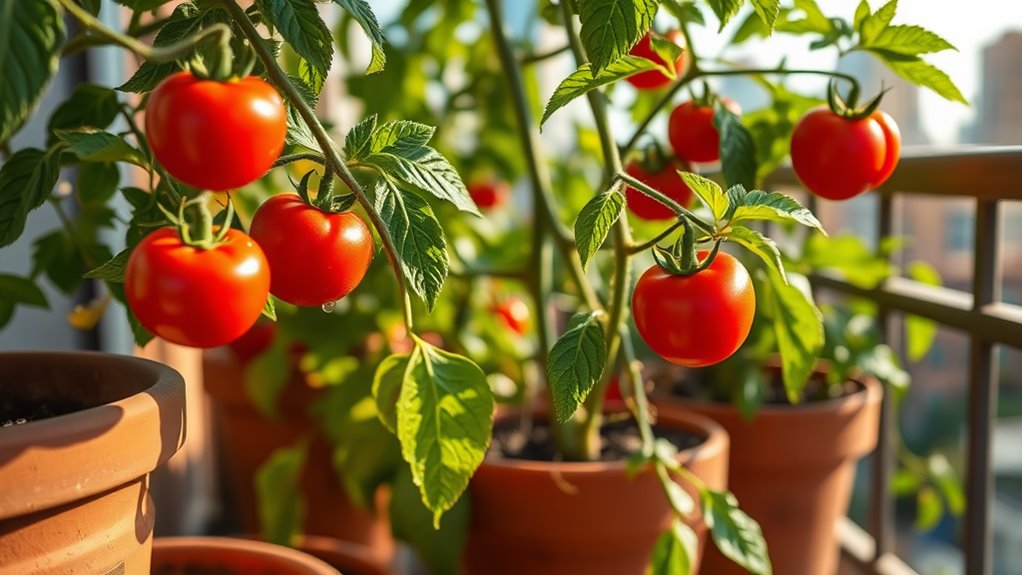This One Herb Changed My Whole Garden Strategy
You can transform your garden strategy with this one powerful herb, boosting yields by up to 50% through enhanced soil health and natural pest resistance. Start by evaluating your climate and soil, then use precise planting methods like sowing seeds at the right depth for optimal growth. It’ll improve nutrient uptake, repel insects via essential oils, and strengthen plant resilience. Adjust your daily routine with simple care tips, and you’ll overcome challenges easily. Explore its creative designs and long-term benefits to elevate your setup further.
Key Takeaways
- Selecting a compatible herb, like one suited to your climate, transforms soil preparation and overall garden planning.
- Implementing precise planting methods for that herb streamlines daily routines and boosts germination success.
- Mastering care techniques, such as targeted watering, prevents issues and enhances herb vitality across the garden.
- Utilizing the herb’s natural advantages, like pest repulsion, improves design and promotes healthier plant ecosystems.
- Overcoming garden challenges with one herb fosters long-term benefits, including better soil health and reduced maintenance costs.
The Game-Changing Herb in My Garden
One herb transformed my garden’s strategy overnight. You uncover herb planting secrets that leverage scientific principles to maximize yields and resilience.
For example, this herb’s natural allelopathy suppresses weeds, promoting healthier plant communities without synthetic interventions. Practically, you select varieties based on their adaptive traits, like drought tolerance or nutrient fixation, to thrive in diverse conditions. Incorporating specific plant combinations can further enhance growth and deter pests effectively.
These secrets reveal how strategic placement enhances pollination and soil fertility, turning your garden into an efficient, self-sustaining system. Embrace these insights for transformative results in your outdoor space. Additionally, by using companion planting techniques, you can pair this herb with complementary plants to further deter pests and increase overall crop yields.
Initial Steps to Incorporating This Herb
You begin by selecting the right herb that suits your garden’s climate and soil type.
Once you’ve chosen, you prepare the soil through testing its pH and adding organic matter for optimal drainage.
These initial actions lay a solid foundation for integrating the herb effectively. For even better results, you can enhance your garden’s productivity by trying an organic fertilizer recipe that uses simple ingredients to promote plant health.
To enhance soil fertility and promote healthier growth, consider incorporating banana peel fertilizer as a natural nutrient source.
Select Herb
Selecting the right herb starts with evaluating your garden’s climate, soil, and intended use. You begin by determining your USDA hardiness zone and average temperatures to select climate-suitable herbs like basil or rosemary.
Assess soil pH and texture for compatibility, ensuring the herb matches what’s already present. Define your purpose: whether for culinary flavoring, medicinal benefits, or aesthetic appeal.
Research options based on these factors—opt for drought-tolerant varieties in arid areas or shade-lovers in cooler spots. This precise evaluation sets you up for a thriving, strategic garden addition.
Prepare Soil
Once you’ve selected your herb, test the soil’s pH and texture to match its needs, as most thrive in a range of 6.0 to 7.5.
Based on your tests, amend the pH by adding lime if it’s acidic or sulfur if it’s alkaline.
For poor texture, incorporate compost into clay soil to enhance drainage and retain nutrients, or mix in peat moss for sandy soil to improve water holding capacity.
Then, till the soil lightly to mix in amendments, ensure good aeration, and remove any debris or weeds.
Finally, water the prepared bed thoroughly to settle the soil and prepare for planting, ensuring optimal conditions for your herb’s growth.
This step sets you up for success.
Key Planting Methods for Optimal Results
While traditional gardening often relies on basic techniques, implementing key planting methods can significantly enhance your herb yields. Incorporating container gardening allows you to grow flavorful herbs even in limited spaces.
Begin by selecting a sunny site with well-prepared soil to promote strong roots. Sow seeds at twice their diameter depth and space them according to species requirements—typically 6-12 inches apart—to optimize air flow and nutrient access.
Time planting with the local growing season for best germination rates. Water seeds immediately after planting, using a gentle stream to prevent erosion, and apply a light mulch layer to conserve moisture.
Monitor seedling emergence closely for early adjustments.
Furthermore, by adopting a simple indoor herb growing setup, you can ensure a year-round supply of fresh herbs for your cooking.
Surprising Advantages of This Herb
You’ve likely found that this herb enhances plant growth by boosting nutrient uptake in your soil.
It actively repels garden pests, helping you maintain a healthier ecosystem without harsh chemicals.
Now, let’s explore how these advantages can transform your gardening approach.
To maximize benefits, gardeners should be aware of harmful veggie pairings that can undermine plant health.
Inspired by my initial experiences, incorporating companion planting led to unexpected boosts in overall garden productivity.
Enhances Plant Growth
This herb supercharges your garden’s plant growth, offering surprising advantages that stem from its natural compounds, like improved nutrient uptake and resistance to common stressors, making it a game-changer for practical gardening.
You’ll find it transforms your plants’ vitality through scientifically backed mechanisms.
-
Boosts your plants’ nutrient absorption, enhancing root efficiency for better yields.
-
Increases photosynthesis rates, allowing your garden to thrive in varying light conditions.
-
Strengthens plant resilience to heat and drought, promoting consistent growth.
-
Improves soil microbial activity, fostering a healthier ecosystem around your roots.
-
Accelerates overall development, helping you achieve robust, high-quality harvests.
Repels Garden Pests
Beyond enhancing plant growth, this herb naturally repels garden pests through its potent essential oils, which interfere with insect feeding and reproduction.
You can plant it strategically among your vegetables to ward off aphids, beetles, and caterpillars, as its oils emit scents that disrupt pest behavior. This approach minimizes damage without harsh chemicals, fostering a balanced garden ecosystem.
For optimal results, intersperse it every few feet; you’ll notice fewer infestations and healthier yields. It’s a simple, eco-friendly tactic that saves you time and effort in pest control.
How It Altered My Daily Gardening Routine
Introducing herbs into your garden can reshape your daily routine, as I found myself adjusting watering schedules to accommodate their thirstier needs. To counter this, I discovered the benefits of low-maintenance herbs that thrive with minimal care and effort.
You’ll begin integrating more precise tasks, turning casual gardening into a structured practice that demands regular attention and adaptation.
By mastering watering techniques, you can ensure your herbs thrive without the risks of overhydration.
- Monitor soil moisture levels using simple meters to prevent overwatering.
- Schedule early morning checks to assess dew and sunlight effects.
- Incorporate quick pruning sessions to encourage robust growth.
- Track daily temperature fluctuations influencing herb vitality.
- Adapt harvesting times based on observable ripening patterns.
Essential Care Tips for Thriving Growth
To keep your herbs thriving, you must focus on precise watering, optimal sunlight, and nutrient-rich soil, as these directly build on the structured routines we’ve established. Additionally, implementing organic tips from natural gardening practices can enhance overall plant health.
For precise watering, use a moisture meter to irrigate only when the top inch dries, preventing root rot while encouraging deep growth.
Ensure optimal sunlight by placing herbs in spots with 6-8 hours of direct light daily; rotate them to avoid uneven development and boost photosynthesis.
Maintain nutrient-rich soil by amending with compost biannually, testing pH for a 6-7 range, and mulching to retain moisture and deter weeds.
Regularly inspect for pests, pruning affected areas to promote vigor and health.
To enhance your herb care, remember that avoiding common mistakes has been key to transforming my garden, based on lessons learned from past errors.
Creative Ways to Use This Herb in Designs
While herbs thrive under proper care, you can creatively incorporate this one into garden designs to enhance both aesthetics and functionality.
It’s versatile, allowing you to blend it seamlessly into landscapes for visual and practical gains.
-
Border planting: Use it to line pathways, where its scent deters pests scientifically, like attracting beneficial insects.
-
Companion integration: Pair it with vegetables; it boosts soil health through natural allelopathy, promoting mutual growth.
-
Vertical features: Train it up trellises for space-saving designs, optimizing light exposure for better yields.
-
Focal elements: Position it in themed beds to create color contrasts, drawing pollinators via its aromatic oils.
-
Container arrangements: Mix it in pots for modular setups, ensuring efficient water use and easy maintenance.
Overcoming Challenges With This Addition
Adding this herb to your garden might introduce challenges like pest susceptibility or soil mismatches, but you’ll tackle them effectively by applying proven strategies that enhance resilience and optimize growth.
First, address pest issues by introducing natural predators like ladybugs or using organic insecticides such as neem oil, which target pests without harming beneficial organisms. Monitor plants weekly for early signs of infestation to act quickly.
For soil mismatches, conduct a soil test to identify pH imbalances or nutrient deficiencies, then amend with compost or specific fertilizers to restore balance. This practical method ensures robust adaptation and sustained health.
Long-Term Impacts on Garden Productivity
As you integrate this herb into your garden, you’ll observe lasting enhancements in productivity, such as improved soil fertility and higher yields over multiple seasons.
This herb fosters a resilient ecosystem by enriching soil health and reducing long-term dependencies on synthetic aids, ensuring sustained growth and efficiency.
-
Boosts soil nutrient retention****, enhancing microbial activity for better organic matter decomposition.
-
Increases pest resistance****, through natural companion effects that deter common invaders.
-
Promotes water efficiency****, by improving soil structure and reducing evaporation losses.
-
Enhances biodiversity****, attracting pollinators and beneficial organisms for ecological balance.
-
Reduces overall costs, via lower fertilizer needs and minimized crop losses over years.





